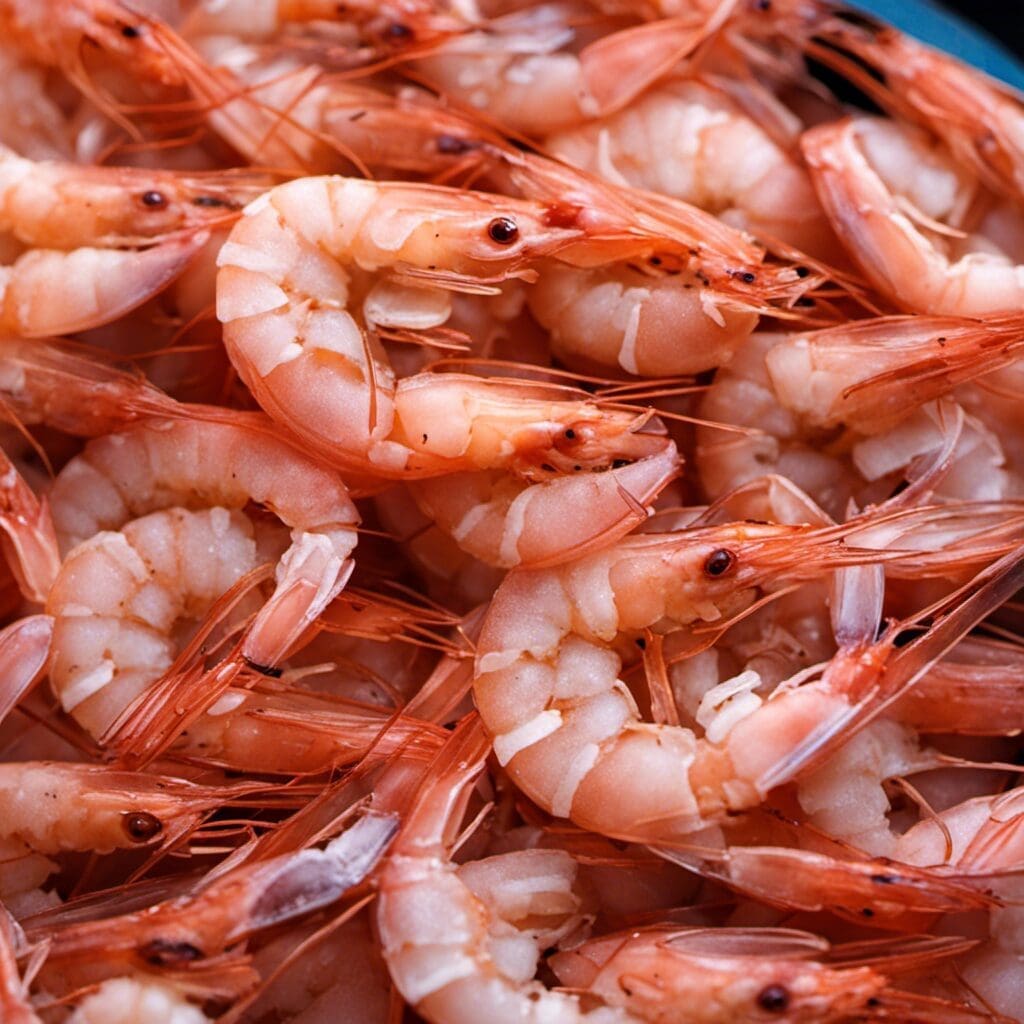Introduction
Let’s dive into the world of a fascinating marine crustacean – the Shrimp. Belonging to the Pleocyemata suborder, part of the Decapoda, or ‘ten-footed’ order, shrimps are renowned for their versatility within global cuisine and unique biology.
Conservation Status
Shrimp are not listed on the IUCN Red List, and their conservation status varies widely depending on the species due to their extensive range and high number of species. Overfishing and loss of their coastal habitat due to human activities are primary concerns for some shrimp species.
Statistics
| Measure | Average | Range |
|---|---|---|
| Length | 1.5 – 3 inches | Up to 12 inches |
| Weight | 1 gram | Up to 50 grams |
| Lifespan | 1-2 years | A few months to 7 years |
Other statistics: Shrimp can swim at speeds approaching 20 inches per second.
Distribution
Shrimp have widespread distribution. Depends on the species, shrimps can be found in every ocean on Earth and in some freshwater environments. Some species prefer colder climates like the Northern Atlantic ocean, while others prefer warmer waters such as the Caribbean and the Indian Ocean.
Habitats
Most shrimp species can be found in saltwater environments, although there are species that inhabit freshwater. They can be found in various depth ranges, from the shallow coastal areas to the deep sea, depending on the species. They prefer warmer waters, but certain species can survive in colder climates.
When and Where to See
Shrimp are present year-round in most locations, although their abundance can vary with the seasons. They are known to be more active at night, making twilight and dawn particularly good times to spot them.
Best Fishing Locations
1. Gulf of Mexico, USA
2. The Bay of Bengal, Bangladesh
3. The South China Sea, China
4. The Yellow Sea, China
5. The Sea of Japan, Japan
6. The Coral Sea, Australia
7. The Indian Ocean, India
8. The Atlantic Coast, USA
9. The Arabian Sea, Middle East
10. The Adriatic Sea, Italy
As for general tips for finding shrimp if specific locations are not known, shrimps are known to prefer areas with sand or mud bottoms where they can burrow or hide.
How to Catch
Using baits like fish meal and fish oil can effectively bait shrimps. Techniques such as trawling, seining and potting are common ways to catch shrimps. Shrimps are more active and easy to catch during the evening and at night.
Identification Guide
Shrimps are easily identified by their small size, thin bodies, and the presence of long antennae. Colors and markings can vary widely depending on species, but on average, shrimps are usually light grey or transparent.
Culinary
Shrimps are an important part of various worldwide cuisines. They have a mild, slightly sweet taste and can be cooked in a myriad of ways, including grilling, stir-frying, baking, and boiling. Shrimp are rich in protein and low in fat, making them a healthy choice for many diets.
Additional Information
Shrimps’ feeding habits vary, but many species are scavengers, feeding on plant matter and small animals. Predators include larger fish, crabs, and humans. Shrimps play significant roles in many aquatic ecosystems due to their function as both predator and prey.
References and Further Reading
Here are some trusted resources where you can expand your knowledge of shrimp:

